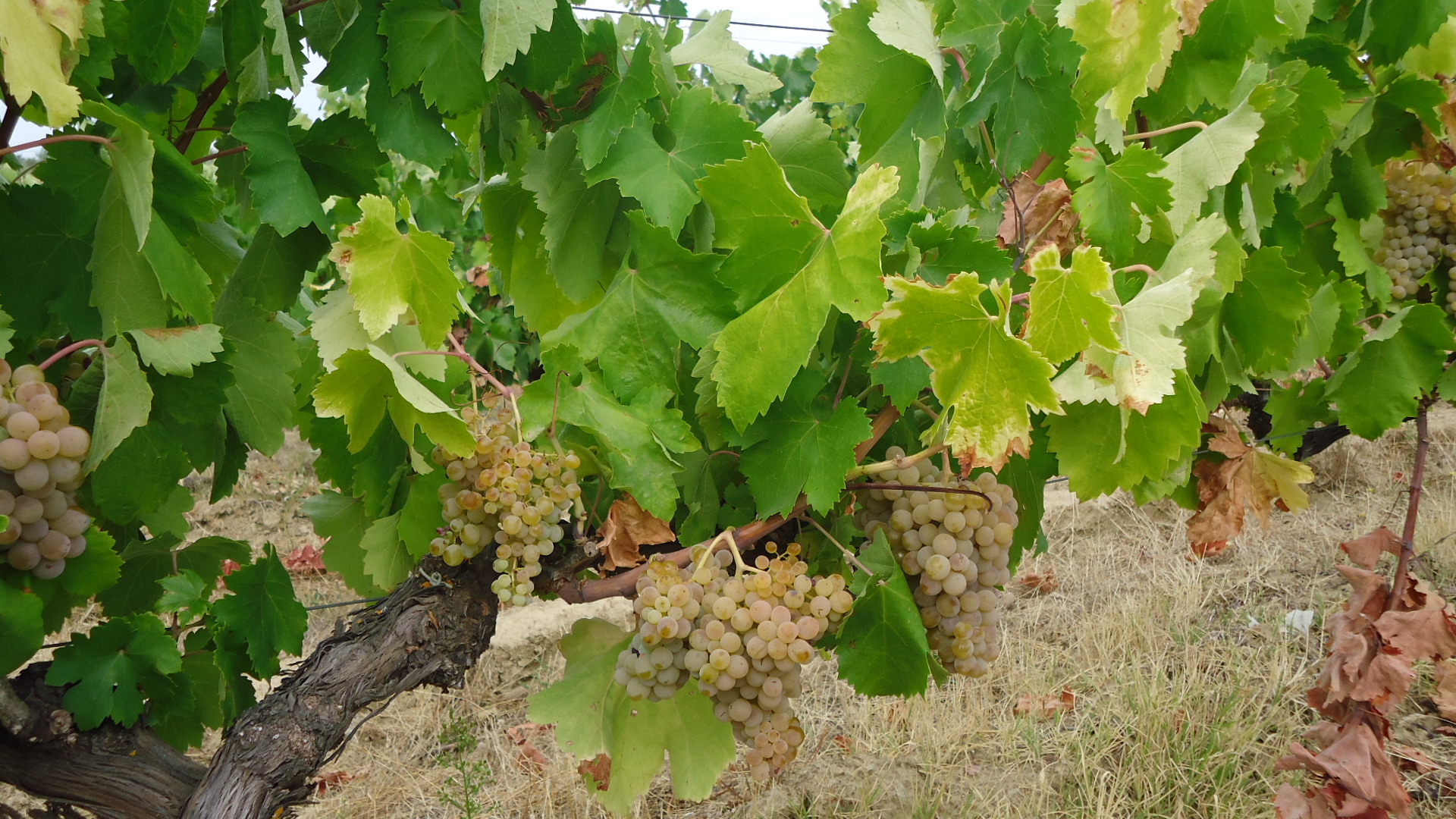Beira Interior
Beira Interior, two thousand years of tradition in wine production
Beira Interior is an extensive wine-growing region that borders on the north with Douro, on the south with Alentejo, on the west with Dão and on the east with Sierra de Salamanca, where today some of the most challenging wines in Spain are produced. Surrounded by such different neighbors, the conclusion can only be one: Beira Interior wine must be good, despite being little known to the Portuguese.

The wine-growing tradition of the region dates back to Roman times, as some of its archaeological treasures prove. After the pacification of the territory, the Romans settled in, created large villages and dedicated themselves to agriculture, particularly to the cultivation of vineyards and the manufacture of wine. There is the idea that this activity took place essentially in Alentejo, where wine is still made in clay vessels according to the “Roman process”. However, in the north of the Tagus, the Roman remains associated with wine are rare and the tradition of producing wine in carvings, if it existed, has faded for centuries, leading to the idea that wine could have become popular only in the medieval period. A remarkable archaeological discovery, right in the heart of Beira Interior, demonstrates that also in the north of the Tagus, Roman wine was produced in an amount higher than necessary for self-consumption and, certainly, with recognized quality. The find site is located in the municipality of Fundão, on the site of Torre dos Namorados, Quintas da Torre, very close to the Roman route that connected the capital of Lusitania, Emerita Augusta - the current Mérida - to Bracara Augusta. Although the site has not yet been studied in detail, the first surveys allowed the identification of technological structures for the production of wine, and probably olive oil, of exceptional quality. A cella vinaria and two large cylindrical counterweights, with large rod presses, allow us to imagine a large volume of wine production for international trading. However, the most sensational discovery was a box built of brick with fragments of tegulae [tiles], covered with clay mortar, where thousands of charred grains and grape skins were found, whose study, currently underway, may reveal the secrets of the Roman vines and evaluate their degree of kinship with the current varieties of Beira Interior. However, the findings did not end there, as very remarkable pieces that are on display at the Archaeological Museum of Fundão were exhumed today, including an intact Roman jar, coated with resin in the inside, intended for fermentation and wine storage. The spoils collected point to an occupation between the 1st half of the 1st century A.D. and the beginning of the 5th century A.D.
The few archaeological studies show that knowledge of the Roman presence in Beira Interior is very deficient, but there are references to the existence of more Roman structures that were used for the production of wine in other places close to the aforementioned Roman route, such as in Terlamonte (Covilhã), Quinta da Fúmea (Belmonte), Prado Galego (Pinhel) and Vale do Mouro (Mêda) allowing us to think that Beira Interior would have been, for about two thousand years, a region dedicated to the production, and export of quality wine abroad.
The medieval wine
The fall of the Roman Empire, the Visigothic invasion and, later, the Arab domain, caused profound changes in society and, naturally, in the entire productive structure, including wine. From a globally organized and controlled society, we moved to a poorly structured society in constant power struggles, where each population tried to survive as it could, at its own expense. Perhaps it is excessive to say that the archaeological remains of Quintas da Torre seem to confirm the extinction of (industrial) wine production on the site, but the fact remains that the later remains - such as the rock mill excavated in the Freixa rock - point to a production of self-subsistence, resorting on incipient rock mills excavated in the rock and pressing systems much more archaic than those of the Roman era.

Beira Interior, like the central and northern part of the country, is full of mills dug into the rock, which testify to the continuity of wine production since Roman times, although in a different inventory. The inventory and study of these mills is yet to be made, but the several hundred known attest to the viticultural vocation and the consumption of wine since ancient times. A recent publication reports 51 rock mills only in the surroundings of the village of Monsanto (Mons Sanctus) showing a pulverization of the rural property, a custom made wine production and, most likely, the supply of wine to the neighboring and important community of Idanha-a-velha.
Another peculiarity of medieval wine is based on the involvement of the Church and religious orders, particularly from the 12th century onwards, in order to control the production of the “blood of Christ”. The Convent of Santa Maria de Aguiar, founded by hermits in the 12th century and later integrated into the Cistercian Order, certainly played an important role in the region's wine destinations, as the wine-growing monks must have played a decisive role in the choice of grape varieties, as some of them have ancestry from ancient French grape varieties, such as Marufo and Folgosão.
A very original winestock
In a region as extensive as Beira Interior, it is natural that the predominant grape varieties of the various sub-regions are different and reflect the dynamics created with the neighboring wine regions. Thus, in the north, the influence of the Douro, the Trás-os-Montes and the Galicia is noticed, in the south, the influence of the Alentejo is detected, the west recognizes the influence of the Dão, to the southwest the effect of the Ribatejo and the the presence
of the Sierra de Salamanca, where the Rufete variety is still the most important today. However, many of these differences are only in the names of the castes.
Around 1850, before the viticulture devastation caused by powdery mildew and phylloxera, the main castes of the various sub-regions would be as follows:
| Sub-region | White grape varieties | Red grape varieties |
| Pinhel | Conete (the same as Códega or Síria), Pardo (?), Fonte da Cal, Malvasia and Rabo de Ovelha | Rifete (Rufete), Marufo, Bastardo, (Tinta) Francisca e Donzelinho |
| Figueira de Castelo Rodrigo | Códega and Estreito (same as Rabigato) | There were practically no red varieties. |
| Belmonte (Cova da Beira) | Alva (Syria), Sedouro (Calum or Batoca) and Folgosão | Rifete, Marufo, Bastardo and Verdelho |
| Covilhã | Sedouro (Calum), Alvar (Syria), Malvasia and Gouveio | Bastardo, Rufete, Cabritalho (?) and Mortágua (Touriga) |
| Idanha e Penamacor (Campo Albicastrense) | Alva (Syria), Malvasia and Folgosão | Rufete, Mourisco (Marufo), Farnento (?) and Cabritalho (?) |
| Sertã | Calum, Alva and Fernão Pires | Mortágua (Touriga), Castelão, Baga and Mourisco |
Approximately one hundred years later, by 1950, the concept was already different, but there was still diversity among the sub-regions, unlike what is happening today, where differences are already difficult to detect and international varieties have a relevant weight. Current trends have led some producers to appreciate the difference and historical roots, starting to give priority to the past grape varieties/castes that had more of an identity, which are, in white, Syria, Fonte Cal, Folgosão and Calum and, in red, Rufete, Marufo , Bastardo, Touriga and Trincadeira.
Original and very elegant wines
There are multiple factors that determine the style of wines. Climate, soil and grape varieties are considered to be the most important, as they are the basis on which the designation of origin is based. However, the wisdom of producers and technology have always been absolutely decisive. Thus, when evoking the wines of the past, it is essential to distinguish between popular and seigniorial wines, with very different characteristics. The first one will always have been, since the democratization of wine consumption at the end of the Roman Empire until the 19th century, a mixing claret with little alcohol content and frequent tasting flaws, the result of the technical incipience with which it was made. The manorial or ecclesial wines were completely different, since they were made with the wisdom of the friars, the best technology of the time and the best grape varieties planted in privileged locations. This was the wine that gave fame to the various wine-growing regions and naturally to Beira Interior.
The style of stately wine will have taken on great relevance since the 19th century, when the use of glass bottles became widespread and it was possible to age it in the cold cellars of the manor beirões. White wine would not be as fruity as it is today, as a slightly oxidative oenology was used that valued taste more than odor. When it was 12 degrees and displayed high acidity, typical of the highlands of the interior, it aged lavishly in the bottle and had great longevity, being the favorite of the aristocratic tables. Red wine, on the other hand, based on the varieties Rufete, Marufo, Mortágua (Touriga) and Bastardo, would not be very loaded with color, but it would also age well, losing the astringency characteristic of youth, gaining the velvety characteristic and developing enormous aromatic complexity that was refined and maintained for decades.
PCurrently, the style of wines has become more sophisticated and has followed the wave of modernity that is experienced in the sector throughout the country. There are very aromatic, fresh whites, with a great gastronomic sense that exalts the characteristics of the main grape varieties in the region - Syria and Fonte Cal - and there are brancos de guarda, which evolve wonderfully in bottles and evoke those of the old beirões manors. Among the reds, there are wines of a modern style, loaded with color, quite alcoholic and full of primary aromas, many of them made with the help of international grape varieties, but there are also wines from the indigenous grape varieties - mainly Rufete, Marufo, Touriga, Trincadeira and Bastardo - with less color and full of originality, both to drink young and to age for a long time in the bottle. And this is only possible thanks to the climate of Beira Interior, the low yields per hectare and the care taken in its preparation.
Fonte Cal and Rufete, treasures of Beira Interior
The old grape varieties of Beira Interior are so many and so original, that it is not easy to choose a white and a red one to represent the identity of the region. We therefore opted for a white grape variety that (still) does not exist in any other wine-growing region in the country - Fonte Cal - and a red grape variety, very old in the whole region, but also very appreciated on the other side of the border - the Rufete.
Fonte cal

The old name and perhaps the original one this grape variety goes by is Fonte da Cal, already so named, in 1790. Everything points to its origin in the Pinhel region, where it has been referenced since the 18th century. It witness an exemplary collective effort to prevent its extinction. It all started in the vineyard of the National Institute for Agricultural Research, planted in 1984, on the Lamaçais farm, thanks to the enthusiasm of engineer Raul dos Santos and the fieldwork of engineers Adalberto Desterro and Alberto Antunes, Pinhel technicians where the grape variety “resisted”. Experimental winemaking did not work, but Eng. Francisco Santos, who accompanied the trial in the vineyard, recognized its viticultural merits, namely its resistance to water and thermal stresses and to poor soil in the region. It distributed some plants to small vineyards in Cova da Beira, in the parishes of Ferro and Caria, but its future was only guaranteed when it was planted at Quinta dos Termos, in 1997. In 2003, it was finally vinified on this farm, for testing. its oenological attributes and it was a resounding success. The wine was magnificent, with a delicate, intense, original and attractive aroma and with a surprising mouth taste, which stood out for the quality of acidity, great mouth structure and balance. Even today, this wine is admirable, confirming the grape's aptitude to stand the test of time. In 2006, with the collaboration of Professor Antero Martins, from the University of Lisbon, a field of clones was planted at Quinta dos Termos, as it was necessary to “save” the caste. Since then, the caste has been cherished by several producers in the region and has produced wines full of originality. Today it is an emblem and a precious wine treasure that indelibly impacts the perfume of the great whites of Beira Interior.
Rufete

In Beira Interior this one is known as the “father of the poor” and one only has to look at the size of a bunch and a loaded strain to immediately understand the nickname. Half a century ago, at a time when quantity was the watchword, it fully justified the epithet and the preference of producers, because in addition to easily reaching 5 kg / strain, it produces well every year, or, as they say in rural world, it is not the way. Although it is a grape variety that identifies with Beira Interior, it also exists on the other side of Serra da Estrela, in Dão, where it is better known as Tinta Pinheira, and as it does not recognize the border or the wars that for centuries waged Castilians and Portuguese, it is also grown in the province of Salamanca, in the Sierra de Francia, where for more than twenty years it has been a symbol of regional identity. Although the Spaniards admit that the variety may originate in Beira Interior, it is cultivated throughout the mountainous area, and is likely to be a legacy of the friars on both sides of the border, who maintained a frequent exchange and a strong influence on viticulture and production of wine, charging religiously the “tithe of God”, the forums and the rents.
Until five years ago Rufete was little esteemed in Beira Interior, being accused of originating wines with little color, thin, very acid, weak in grade and without aging capacity, not deserving the preferences of the producers who wanted to renew their vineyards. However, everything has changed in recent years, when some accredited producers from Pinhel and Cova da Beira decided to understand their whims and began to cultivate it lovingly and to vinify it carefully. Like any large grape variety it is difficult and a constant challenge for winemakers. It has great clonal heterogeneity, with vines with large bunches and fat berries and others with small bunches and small berries, which oenological behavior is very uneven. The latter tend to always give more grade and more colored, concentrated and aromatic wines. Nor can it produce much, because the higher the production, the lower the quality of the wines. In good harvest years, when the maturation is complete, it produces exceptional wines, with a beautiful ruby color, rich aroma, with an easily recognizable character and very elegant in the mouth, where a seductive acidity, irreverent astringency and remarkable aromatic flavor prevails. They are not very long-lived wines, which shine more while youth lasts, but which can gain complexity with a few years in the bottle. Fortunately, the variety begins to be discovered by producers and consumers, given its enormous originality.






